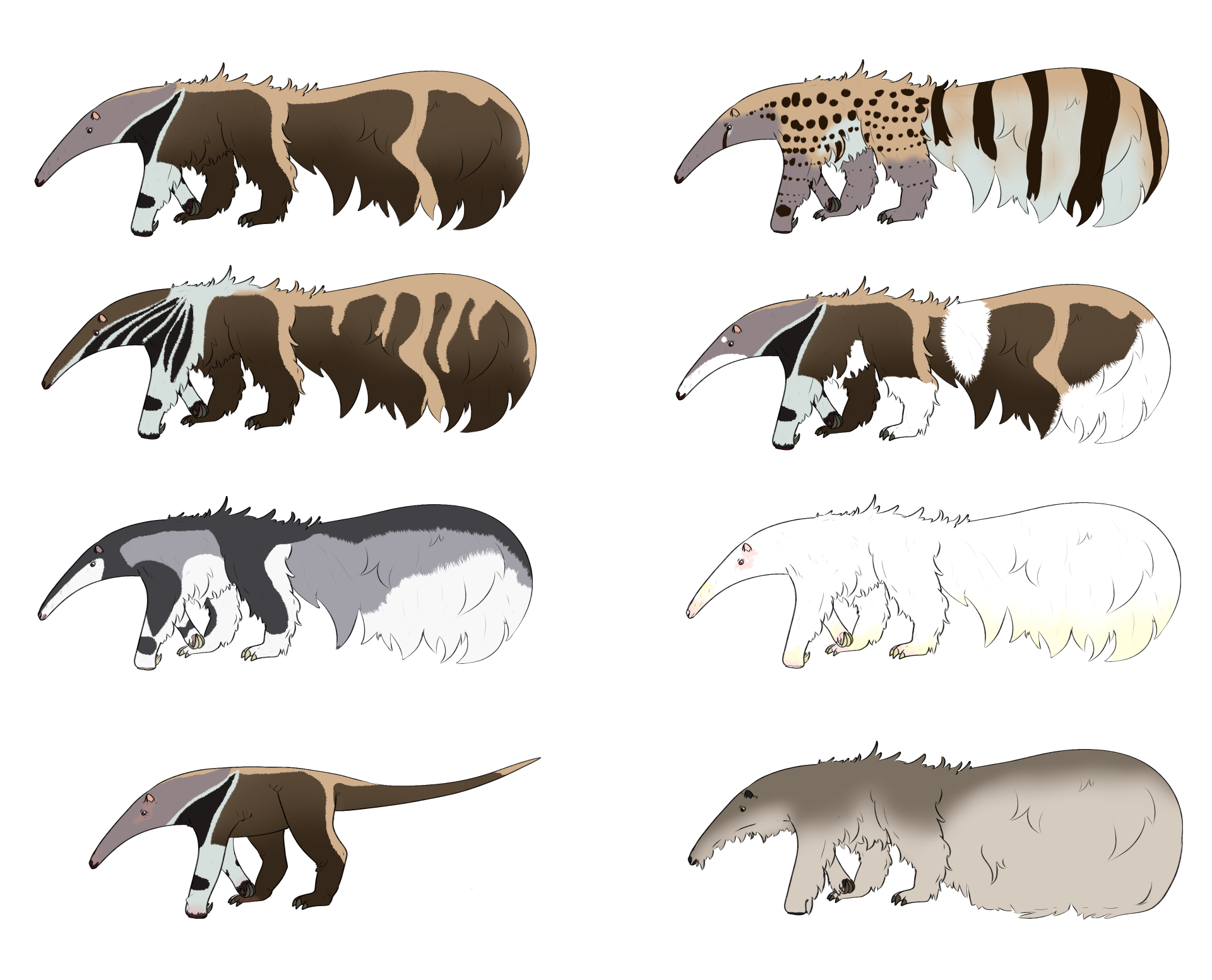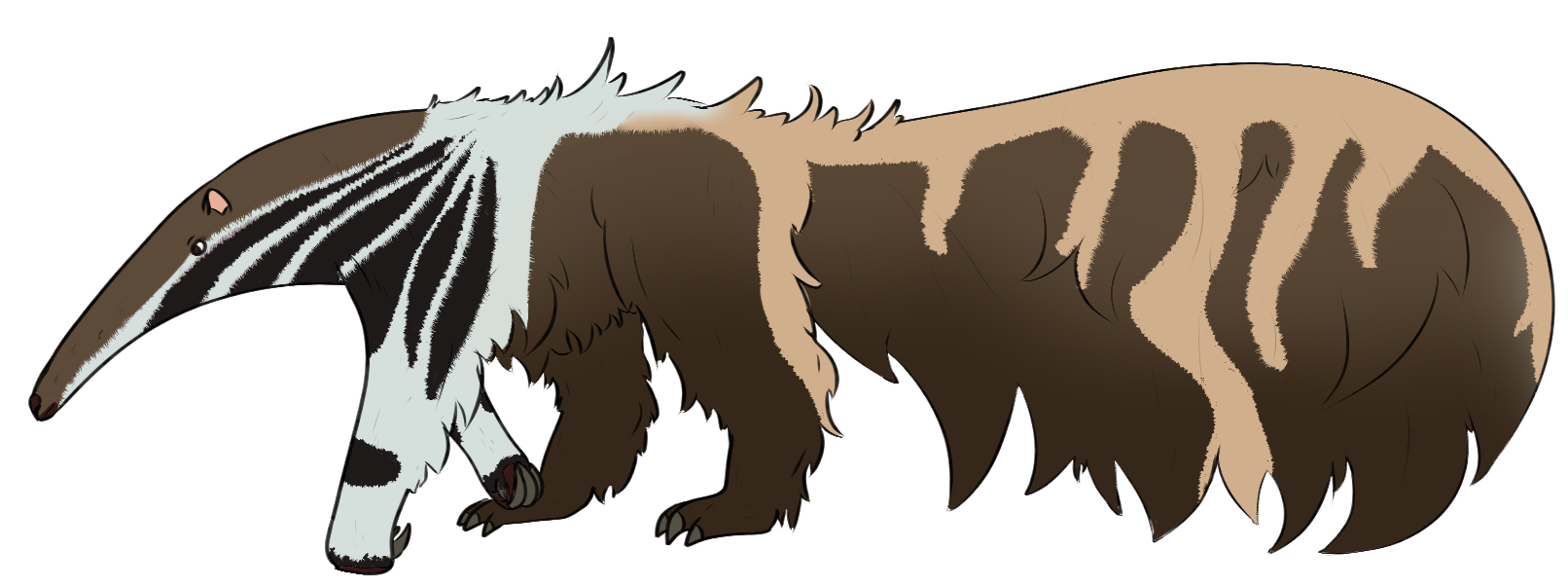
Navigation
Outside Links
Anteaters
Anteaters are described as: any creature with an elogated muzzle for feasting on colonial insects; large, often specialized claws; a fused jaw; and a long, sticky tongue.
| Domestic Anteaters | |
|---|---|
|
|
|
| An overlined morph of anteaters. This is the most common domestic morph. | |
| Biology | |
| Size | 4-9ft long, 53-130 lbs |
| Diet | Ants, termites, varius distructive pest insects |
| Range | Lower coastal Patchwork City Pennisula to south-east Mozi. |
► Basics
Domestic anteaters are a terrestrial form of anteater that lives in grassy and forested areas. It's large claws are used for cracking into ant and termite nests to feast. Domestic anteaters can either be solitary, living with children, or forming small bands of siblings. Humans on Diatatus domesticated this species before the last God-Era, using them as a form of living pest control and predator deterrent.
► Human Interractions
Domestic anteaters are often kept in groups of 1-3, with most being kept alone. They are amiable to dogs, if raised around them. Vests, muzzle wraps, and bows are common accessories.
Domestic anteaters have a 1/100 mother-child rejection rate, so a small number are raised by hand. These tend to be much more affectionate than others.

Common color morphs and mutations that have been bred into anteaters. (Numbered from top left to bottom right.)
